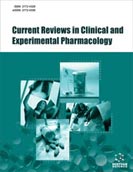Abstract
Background: Over the years, drug monitoring-such as Anti-Drug Antibodies (ADA) dosage- has witnessed major transformations. In fact, ADA are more and more used in rheumatology and gastro-enterology in monitoring chronic inflammatory disease therapeutic response. The main purpose of those researches is to produce less immunogenic drugs and, in consequences, to improve tolerance and efficiency since immunogenicity of those drugs still is the main constraint to their long-term use. The aim of this review was to highlight anti-drug-antibodies potential effects on the pharmacokinetics and bioavailability of biotherapies as well as their clinical implications.
Methods: For this purpose, we collected and summarized published data on PubMed using keywords “Biologics, Rheumatoid Arthritis, Spondyloarthritis, Crohn disease, Anti-drug antibodies, residual rate, immunogenicity, efficacy, tolerance”. The time-period selected for this study was 2000-2019.
Results: Anti-Drug-antibodies decrease the pharmaco-availability of drugs and, in consequences, its efficiency and high risk of refractory diseases and side effects.
Conclusion: Recent literature is consistent with the fact that drug monitoring using ADA dosage coupled with residual drug concentration offers reliable options to comfort practitioner’ therapeutic management decisions. This is particularly interesting in failure of treatment or in side effects onset situations.
Keywords: Anti-drug antibodies, biologics, residual dose, spondyloarthritis, rheumatoid arthritis, crohn disease.






























